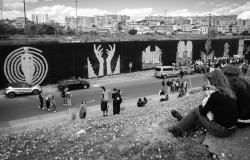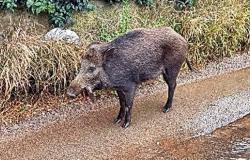The Bee Garden arrives in Brescia in Viale Duca degli Abruzzi.
The city of Brescia welcomes the Bee Garden
It is an innovative park whose main objective is to make a specific habitat available to pollinating insects which, over time, has become less and less present in the city. The implementation as part of Un Filo Naturale, a Climate Transition Strategy developed by the Municipality of Brescia in partnership with AmbienteParco, with the Euro-Mediterranean Center for Climate Change Foundation and with the Parco delle Colline di Brescia thanks to the contribution of the Cariplo Foundation and of the Lombardy Region.
Purpose
In addition to increasing natural capital and biodiversity in a now urbanized area, these interventions aim to reduce the urban heat island, increase urban drainage and mitigate the effects of air pollution. Inside the garden, which extends from south to north, fruit plants, bushes and flowering meadows alternate: an environment that requires limited maintenance interventions to encourage flowering.
How it is structured
A path crosses the park and intercepts areas dedicated to different species, organized into orderly “vegetable rooms” allowing visitors to explore this city space dedicated to biodiversity. Large areas of the garden are dedicated to flower meadows which, thanks to their different colours, favor the presence of numerous pollinating insects (bees, butterflies, bumblebees and ladybugs). Within these areas insects can find pollen, nectar, and places for pollination and overwintering.
There are also rows of fruit trees (Quince, European Loquat, Japanese Loquat, European Plum, Sweet Cherry, Black Cherry, Sour Cherry, Marasca, Almond, Fig, Persimmon and Walnut). These are rustic species that require very little care and are not normally subject to attacks by insects or pathogenic organisms. Furthermore, these types of plants are able to resist difficult climatic conditions and offer spontaneous and natural production of edible fruits for humans and animals, in harmony with the environment.
The presence of shrubbery
Inside the garden there are also various shrubbery, including, in particular, honey shrubs. The latter produce a high quantity of nectar, have an intense scent and abundant and very colorful blooms, particularly appreciated by bees.
There is also a row of mulberry trees located along Viale Duca degli Abruzzi, in harmony with the trees present to the north, in the Basaglia park, and on the edge of the agricultural areas to the south. The mulberry trees, which recall elements of the rural landscape of the past, also create a visual barrier, attenuating the impact of the road on the garden. Environmental degradation and the loss of natural and semi-natural habitats represent the main threats to pollinating insects, without which the reproductive cycle of plants would be seriously compromised. The Bee Garden represents a corner of biodiversity, similar to those present in other European cities, which allows the flora to complete its reproductive cycle, encouraging its diffusion.
The intervention, in detail
The intervention is part of action 2.7 of Un Filo Naturale, called “Forestation interventions and creation of new habitats also to strengthen the municipal ecological network”action to adapt to climate change.
Urban reforestation makes it possible to achieve i three programmatic objectives of the Climate Transition Strategy: transforming Brescia into an “oasis city” with ample availability of shade and a better urban microclimate, also contributing to the storage of climate-altering gases, into a “sponge city” capable of restoring permeability to the soil and into a “city for people” that knows how to offer beautiful, livable and aggregating spaces to citizens.





